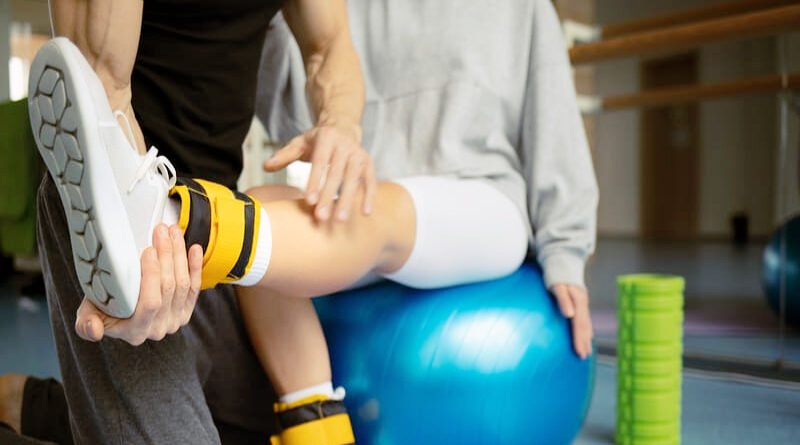Physical Therapy for Injuries
Understanding the Importance of Physical Therapy
Injuries can disrupt daily life, affecting mobility and overall well-being. Physical therapy for injuries plays a crucial role in aiding recovery by focusing on restoring strength, flexibility, and function. Through tailored exercises and hands-on techniques, therapists help individuals regain movement and reduce pain effectively.
Physical therapy for injuries is beneficial for a range of conditions, including muscle strains, joint dislocations, fractures, and post-surgical rehabilitation. Instead of relying solely on medication or invasive procedures, therapy provides a structured approach to healing while preventing future complications.
How Physical Therapy Works
At the core of physical therapy for injuries is an individualized approach. Therapists assess each patient’s condition, medical history, and lifestyle to design a personalized treatment plan. This may include therapeutic exercises, manual therapy, and modalities like ultrasound or electrical stimulation.
Regular therapy sessions not only aid physical recovery but also educate patients on proper body mechanics, posture, and injury prevention strategies. By addressing the root cause of injuries, physical therapy for injuries promotes long-term health and mobility.
Common Injuries Treated with Physical Therapy
1. Sports Injuries
Athletes often face injuries like ligament tears, sprains, and overuse conditions. Physical therapists specialize in sports rehabilitation, helping players restore function and prevent recurring injuries through strength training and flexibility exercises.
2. Work-Related Injuries
Repetitive strain injuries, back pain, and carpal tunnel syndrome are common in workplace settings. Physical therapy for injuries helps employees recover while providing ergonomic guidance to avoid future strain.
3. Post-Surgical Rehabilitation
After surgery, regaining mobility and strength is crucial. Physical therapists work closely with patients recovering from knee replacements, spinal surgeries, and other procedures, ensuring a safe and effective rehabilitation process.
4. Chronic Pain Management
Conditions like arthritis and fibromyalgia can lead to persistent pain. Physical therapy provides techniques to manage discomfort, improve joint function, and enhance quality of life without overreliance on pain medications.
The Role of Exercise in Recovery
Movement is a key element of physical therapy for injuries. Strengthening exercises, stretching routines, and cardiovascular activities are incorporated to enhance endurance and support healing. Each exercise plan is customized based on injury type and patient capability.
Progressive exercise programs gradually restore function while minimizing the risk of aggravating the injury. Patients are guided on how to perform exercises correctly to maximize benefits and prevent further issues.
Manual Therapy Techniques
Hands-on techniques such as massage, joint mobilization, and soft tissue manipulation play an essential role in recovery. These therapies improve circulation, reduce stiffness, and alleviate muscle tension, complementing exercise-based rehabilitation.
Manual therapy is especially useful for conditions like frozen shoulder, back pain, and post-operative stiffness. It promotes relaxation and enhances the body’s natural healing process.
Preventing Future Injuries
Physical therapy extends beyond treatment—it also focuses on injury prevention. Therapists educate patients on posture correction, movement patterns, and strengthening weak areas to reduce the likelihood of recurring injuries.
By incorporating these preventive measures into daily routines, individuals can maintain mobility and minimize the risk of future physical setbacks.
Rehabilitation for Different Age Groups
1. Physical Therapy for Children
Children may require physical therapy due to developmental delays, sports injuries, or congenital conditions. Pediatric therapists use specialized techniques to enhance movement and coordination in a fun, engaging manner.
2. Physical Therapy for Adults
For adults, therapy often addresses work-related injuries, post-surgical recovery, and chronic pain. Treatment plans are designed to improve mobility, strength, and independence in daily activities.
3. Physical Therapy for Seniors
Older adults benefit from therapy to manage arthritis, osteoporosis, and balance issues. Fall prevention exercises and mobility training help seniors maintain independence and reduce injury risks.
Advanced Techniques in Physical Therapy
1. Hydrotherapy
Water-based exercises reduce impact on joints while promoting muscle strength and flexibility. This technique is beneficial for post-surgical patients and individuals with chronic pain conditions.
2. Electrical Stimulation
This method uses controlled electrical currents to stimulate muscles, improve circulation, and reduce pain. It is often used in rehabilitation for nerve injuries and muscle weakness.
3. Dry Needling
A technique similar to acupuncture, dry needling targets muscle trigger points to relieve tension and improve mobility. It is effective for chronic pain and sports injuries.
Conclusion
Physical therapy for injuries is a crucial component of recovery, offering a non-invasive, structured approach to healing. Whether recovering from surgery, managing chronic pain, or preventing future injuries, working with a qualified physical therapist ensures better mobility, strength, and long-term health. By incorporating personalized exercise programs, manual therapy, and advanced techniques, physical therapy helps individuals regain function and enhance their quality of life.
Also visit Digital Global Times for more quality informative content.

